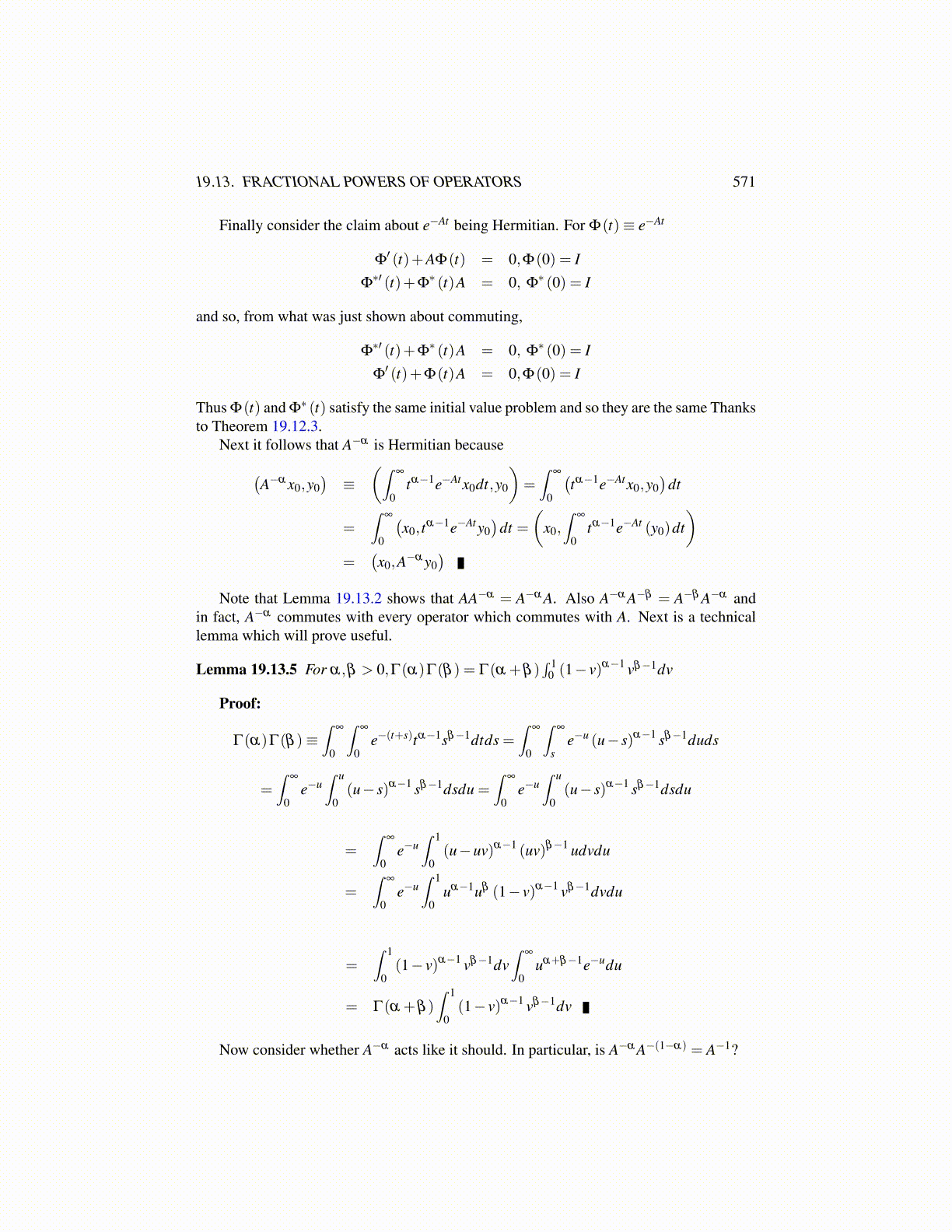
19.13. FRACTIONAL POWERS OF OPERATORS 571
Finally consider the claim about e−At being Hermitian. For Φ(t)≡ e−At
Φ′ (t)+AΦ(t) = 0,Φ(0) = I
Φ∗′ (t)+Φ
∗ (t)A = 0, Φ∗ (0) = I
and so, from what was just shown about commuting,
Φ∗′ (t)+Φ
∗ (t)A = 0, Φ∗ (0) = I
Φ′ (t)+Φ(t)A = 0,Φ(0) = I
Thus Φ(t) and Φ∗ (t) satisfy the same initial value problem and so they are the same Thanksto Theorem 19.12.3.
Next it follows that A−α is Hermitian because(A−α x0,y0
)≡
(∫∞
0tα−1e−Atx0dt,y0
)=∫
∞
0
(tα−1e−Atx0,y0
)dt
=∫
∞
0
(x0, tα−1e−Aty0
)dt =
(x0,∫
∞
0tα−1e−At (y0)dt
)=
(x0,A−α y0
)Note that Lemma 19.13.2 shows that AA−α = A−α A. Also A−α A−β = A−β A−α and
in fact, A−α commutes with every operator which commutes with A. Next is a technicallemma which will prove useful.
Lemma 19.13.5 For α,β > 0,Γ(α)Γ(β ) = Γ(α +β )∫ 1
0 (1− v)α−1 vβ−1dv
Proof:
Γ(α)Γ(β )≡∫
∞
0
∫∞
0e−(t+s)tα−1sβ−1dtds =
∫∞
0
∫∞
se−u (u− s)α−1 sβ−1duds
=∫
∞
0e−u
∫ u
0(u− s)α−1 sβ−1dsdu =
∫∞
0e−u
∫ u
0(u− s)α−1 sβ−1dsdu
=∫
∞
0e−u
∫ 1
0(u−uv)α−1 (uv)β−1 udvdu
=∫
∞
0e−u
∫ 1
0uα−1uβ (1− v)α−1 vβ−1dvdu
=∫ 1
0(1− v)α−1 vβ−1dv
∫∞
0uα+β−1e−udu
= Γ(α +β )∫ 1
0(1− v)α−1 vβ−1dv
Now consider whether A−α acts like it should. In particular, is A−α A−(1−α) = A−1?